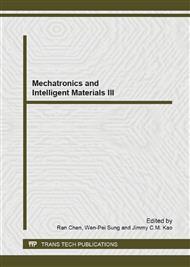p.1504
p.1511
p.1516
p.1520
p.1524
p.1529
p.1533
p.1537
p.1541
Research on Lifting Capacity of Truck Crane Based on Improved Bicubic Interpolation
Abstract:
To accurately compare lifting performance of different wheeled cranes , with discrete original sample data as source data, telescopic boom length and lifting radius as design variables, a surface interpolation mathematical model about crane lifting capacity is built based on improved bicubic interpolation method. On this basis, an analysis is done between a 80 tons truck crane and its upgraded product. The result indicates: under the working conditions of the telescopic boom and maximum counterweight, upgraded product lifting performance is improved significantly, more than 80% of the design points increase above 10%, more than 50% of the design points increase above 20%, and about 10% design points increase less than 7%. The analysis shows that the improved bicubic interpolation method is feasible to predict surface interpolation based on scattered points, it provides accurate data to wheeled cranes lifting performance comparison study.
Info:
Periodical:
Pages:
1524-1528
Citation:
Online since:
June 2013
Authors:
Price:
Сopyright:
© 2013 Trans Tech Publications Ltd. All Rights Reserved
Share:
Citation:


